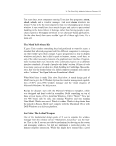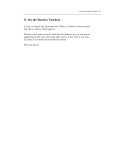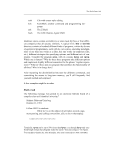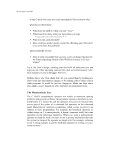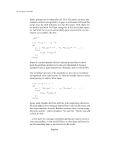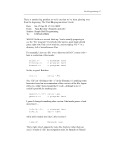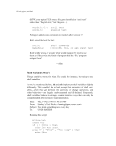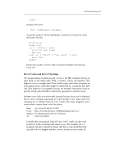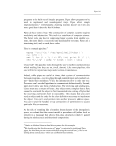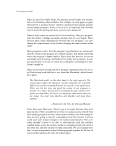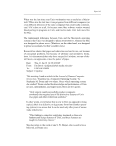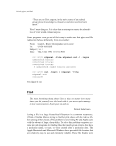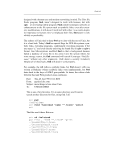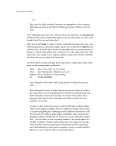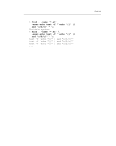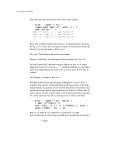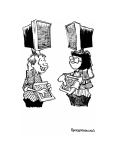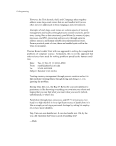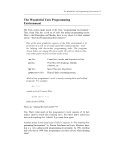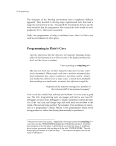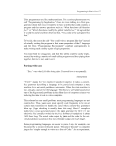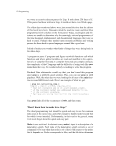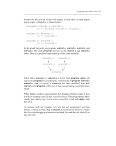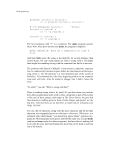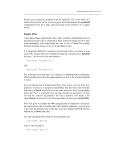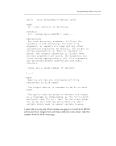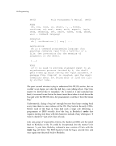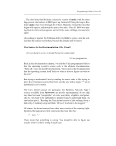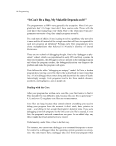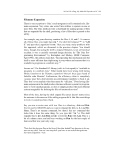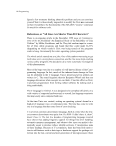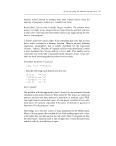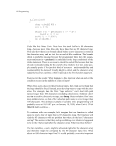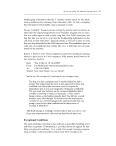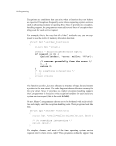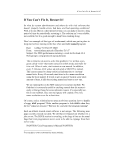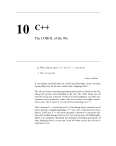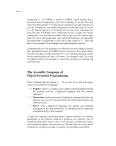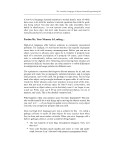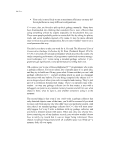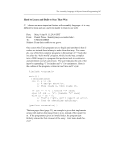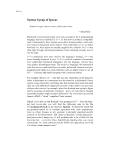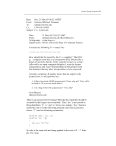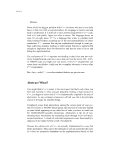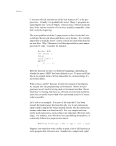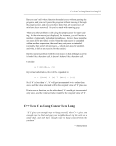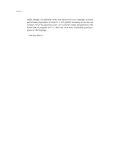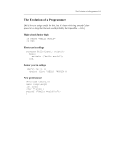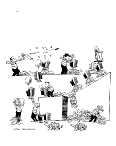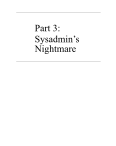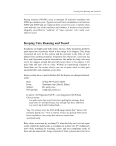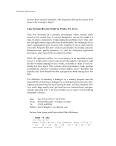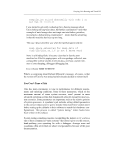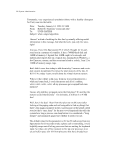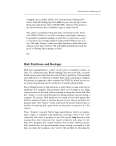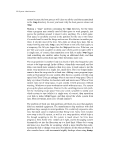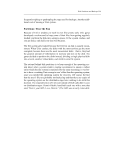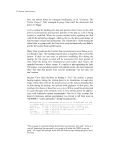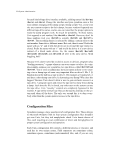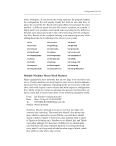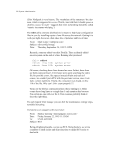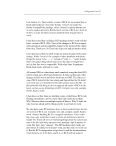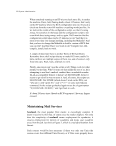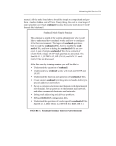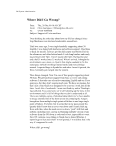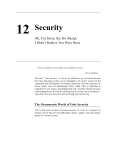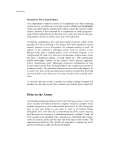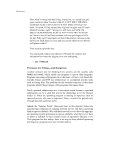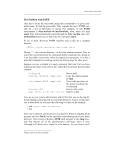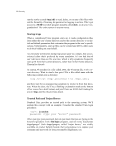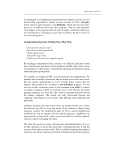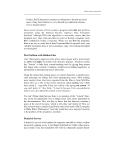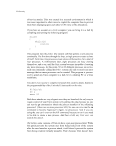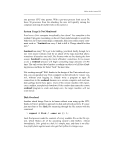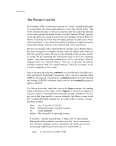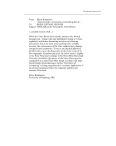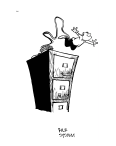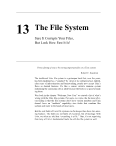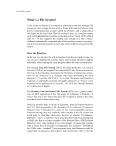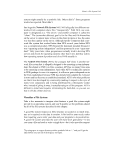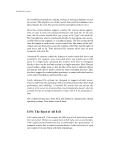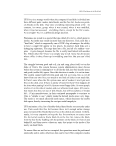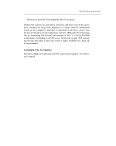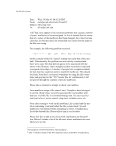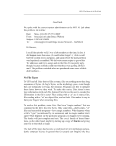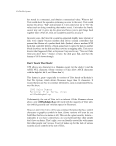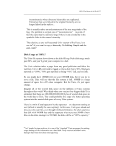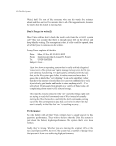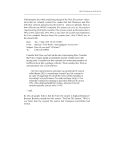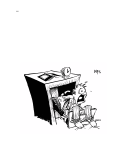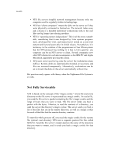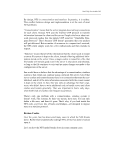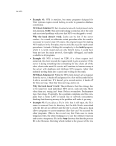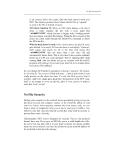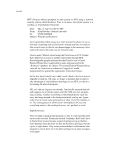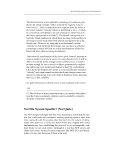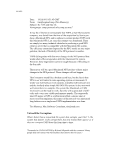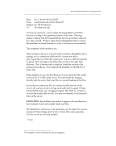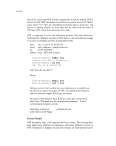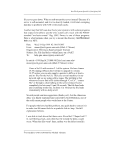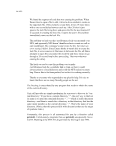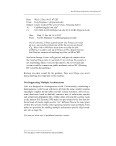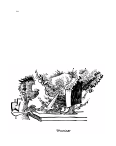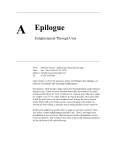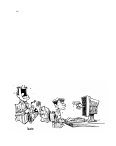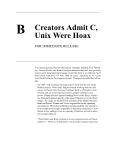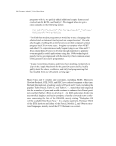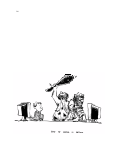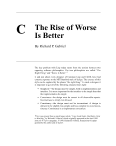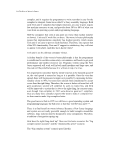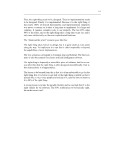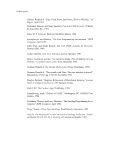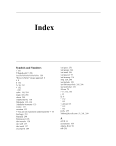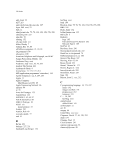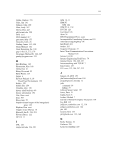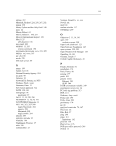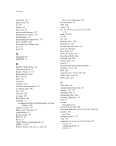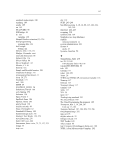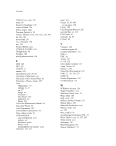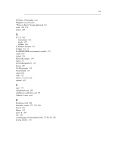96 Snoozenet People complain about "lazy or inattentive sysadmins". One look at news.admin and you'll instantly understand why it's mostly a waste of time. None of LuseNet is cast in concrete, though Bandy has been plastered. Let you who is without sin cast the first stone. —nick Newsgroups So far we haven’t actually said what Usenet is, that is, we haven’t said how you can tell if a computer system is or isn’t a part of it. That’s because nobody really can say. The best definition might be this: if you receive some newsgroups somehow, and if you can write messages that others can read, then you’re a part of Usenet. Once again, the virus analogy comes to mind: once you touch it, you’re infected, and you can spread the infection. What’s a newsgroup? Theoretically, newsgroups are the Dewey Decimal System of Usenet. A newsgroup is a period-separated set of words (or com- mon acronyms or abbreviations) that is read from left to right. For exam- ple, misc.consumers.house is the newsgroup for discussions about owning or buying a house and sci.chem.organomet is for discussion of organome- tallic chemistry, whatever that is. The left-most part of the name is called the hierarchy, or sometimes the top-level hierarchy. Usenet is international, and while most groups have English names, users may bump into gems like finet.freenet.oppimiskeskus.ammatilliset.oppisopimus. (By the way, you pronounce the first period in the names so that “comp.foo” is pronounced “comp-dot-foo.” In written messages, the name parts are often abbreviated to a single letter when the context is clear, so a discussion about comp.sources.unix might use the term “c.s.u.”) One section of Usenet called “alt” is like the remainder bin at a book or record store, or the open shelf section of a company library—you never know what you might find, and it rarely has value. For example, a fan of the Muppets with a puckish sense of humor once created alt.swed- ish.chef.bork.bork.bork. As is typical with Unix weenies, they sort of fig- ured out the pattern, and you can now find the following on some sites: alt.alien.vampire.flonk.flonk.flonk alt.andy.whine.whine.whine
Newsgroups 97 alt.tv.dinosaurs.barney.die.die.die alt.biff.biff.bork.bork.bork alt.bob-packwood.tongue.tongue.tongue alt.tv.90210.sucks.sucks.sucks alt.american.automobile.breakdown.breakdown. breakdown As you can see, the joke wears thin rather quickly. Not that that stops any- one on the Usenet. Hurling Hierarchies Usenet originally had two hierarchies, net and fa. The origins of the term “net” are lost. The “fa” stood for from ARPANET and was a way of receiv- ing some of the most popular ARPANET mailing lists as netnews. The “fa” groups were special in that only one site (an overloaded DEC VAX at UCB that was the computer science department’s main gateway to the ARPA- NET) was authorized to post the messages. This concept became very use- ful, so a later release of the Usenet software renamed the fa hierarchy to mod, where “mod” stood for moderated. The software was changed to for- ward a message posted to a moderated group to the group’s “moderator” (specified in a configuration file) who would read the message, check it out to some degree, and then repost it. To repost, the moderator added a header that said “Approved” with some text, typically the moderator’s address. Of course, anyone can forge articles in moderated groups. This does not hap- pen too often, if only because it is so easy to do so: there is little challenge in breaking into a safe where the combination is written on the door. Mod- erated groups were the first close integration of mail and news they could be considered among the first hesitant crawls onto the information super- highway.2 The term “net” cropped up in Usenet discussions, and an informal caste system developed. The everyday people, called “net.folk” or “net.deni- zens,” who mostly read and occasionally posted articles, occupied the low- est rung. People well known for their particularly insightful, obnoxious, or prolific postings were called net.personalities. At the top rung were the 2The first crawls, of course, occured on the ARPANET, which had real computers running real operating systems. Before netnews exploded, the users of MIT-MC, MIT’s largest and fastest KL-10, were ready to lynch Roger Duffey of the Artificial Intelligence Laboratory for SF-LOVERS, a national mailing list that was rapidly taking over all of MC’s night cycles. Ever wonder where the “list-REQUEST” con- vention and digestification software came from? They came from Roger, trying to save his hide.




































































































































































